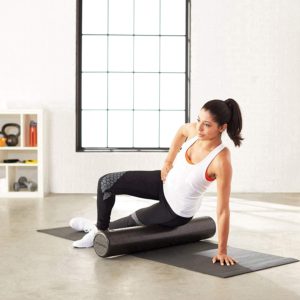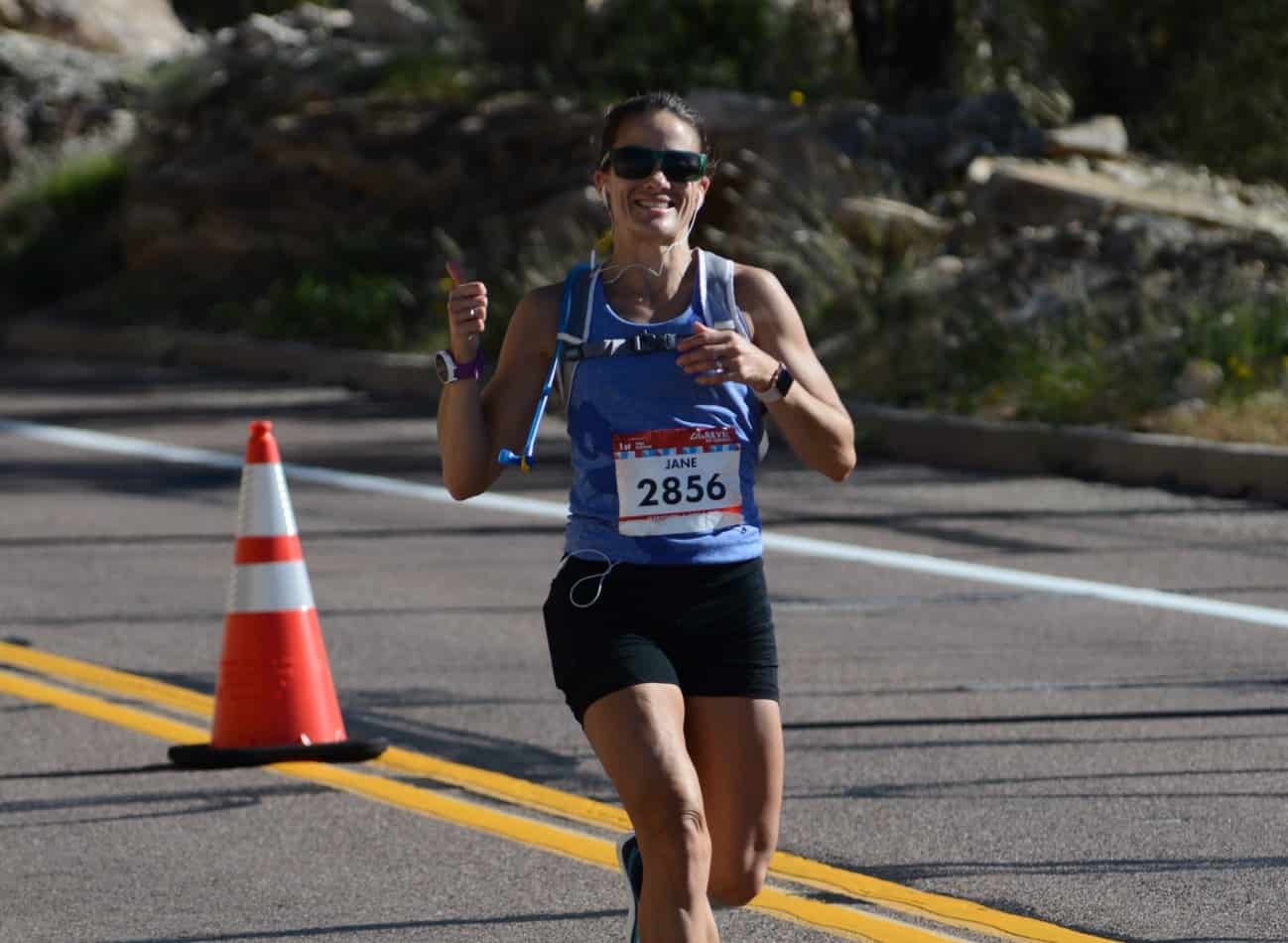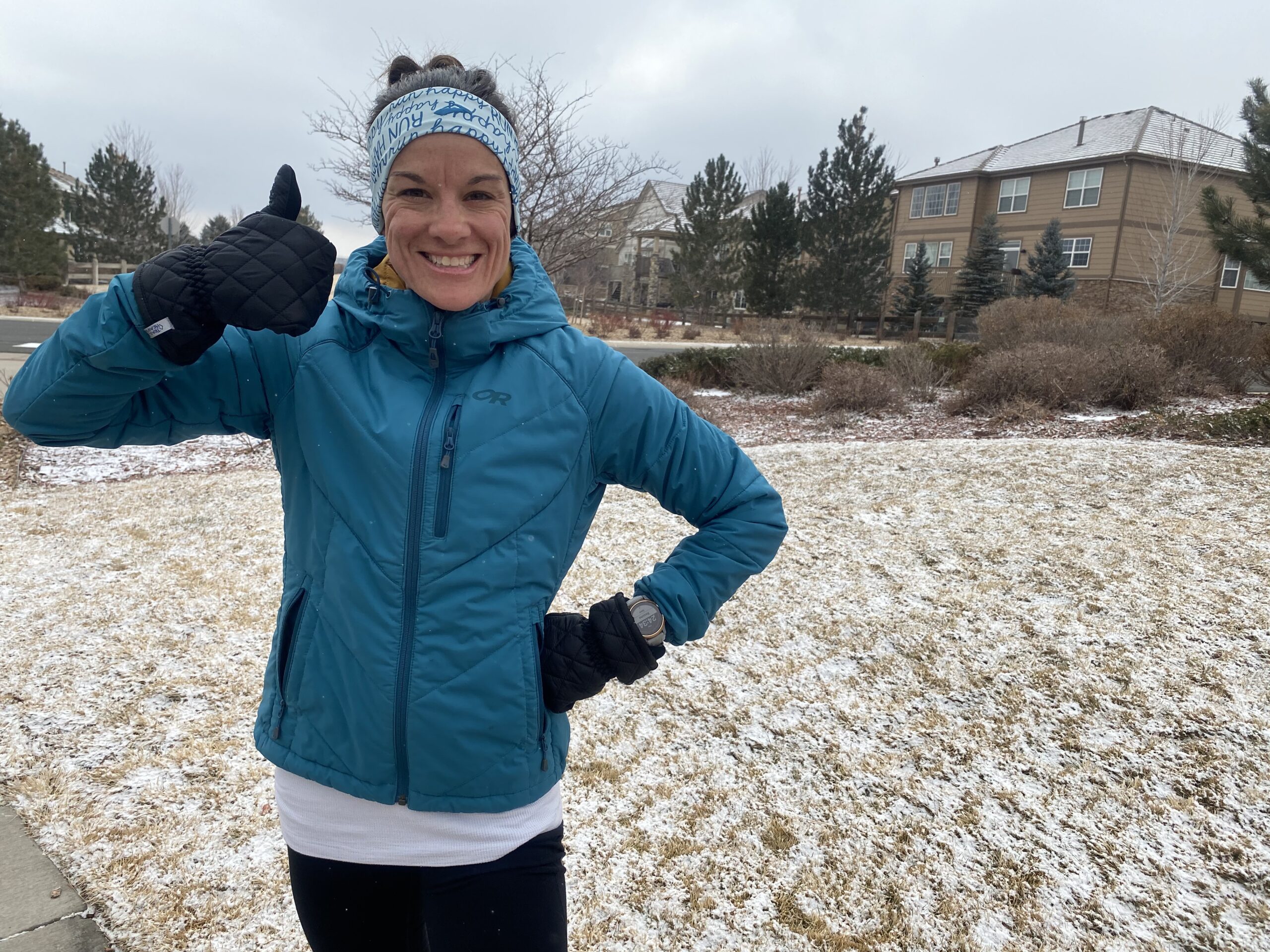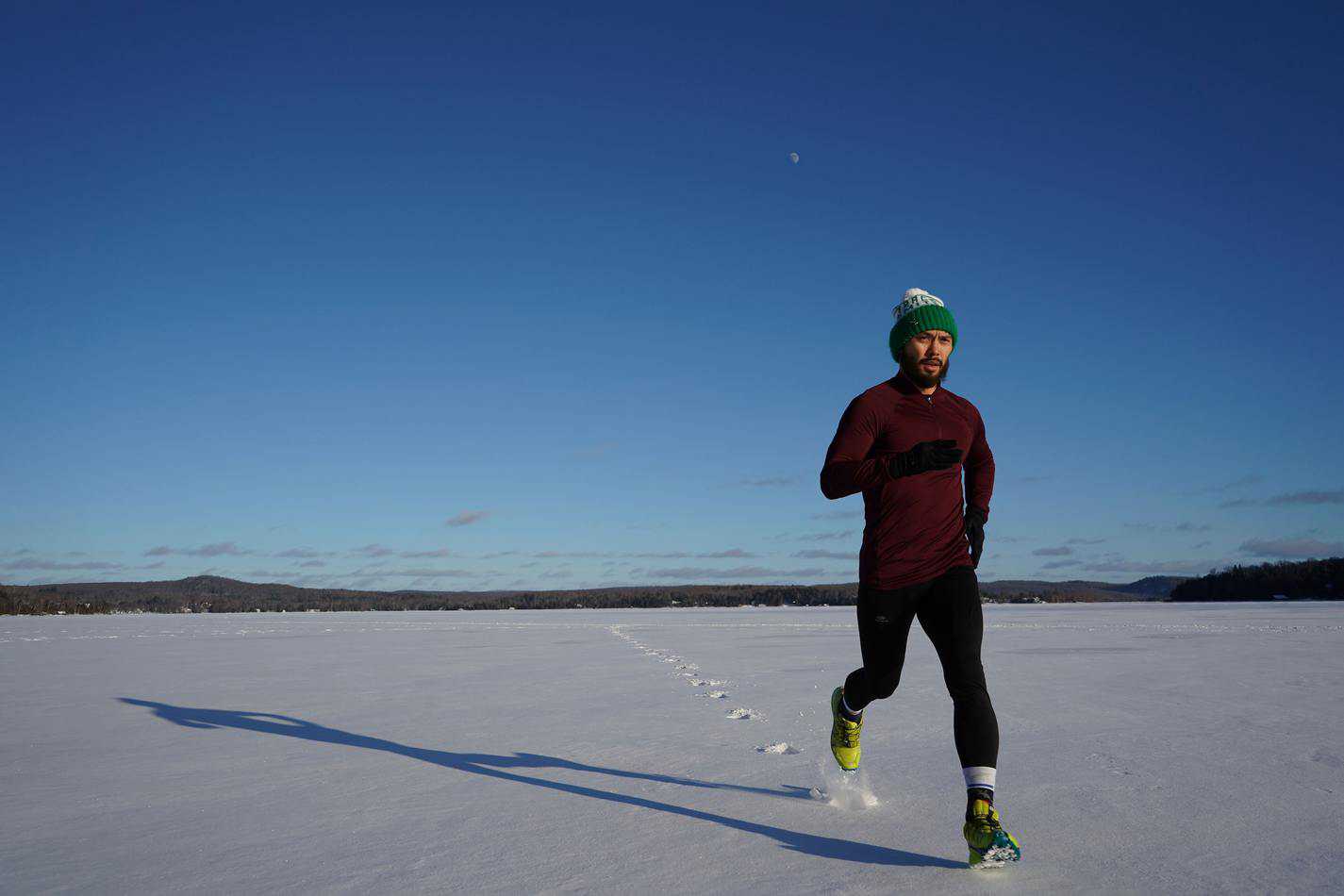One of the biggest reasons that I started running was because it was fuss-free. I already owned a t-shirt, a pair of athletic shorts, and a pair of running shoes. And there was a sidewalk right outside my door that I could run on. This shortlist of marathon runner must-haves carried me through a lot of years of low-mileage running. But once I started focusing on getting faster as well as running marathons, the list of what I felt I needed began to grow.
Not just gear, but finding a great running plan as well as seeking out inspiration also became important to me, because I sure didn’t know what I was doing on my own. I have quite a few things I can’t train without, so I thought I’d share my top 10 marathon runner must-haves.
I still crave those easy run days with little prep or thinking involved. But as a goal-oriented runner, I have a pretty long list of things I use to do my best that I think you’ll find helpful, too!
Here are my top 10 marathon runner must-haves and my best picks in each category.
- GPS Watch: Garmin Forerunner 55 is my go to!
- Wireless Headphones: I love my Shokz OpenRun for safer, open ear running (and here’s a list of great ones that will actually stay in your ears!)
- Anti-Chafing Product: BodyGlide will be your best friend!! (Trust…don’t skip this step)
- Hydration System: Obsessed with the Nathan Pinnacle 4L vest for long runs and Fitly flasks for racing or shorter runs.
- Compression Pocket Shorts: Baleaf is a brand I like that is inexpensive, and my new favorite are these from Fabletics (they don’t budge!). For the guys, my husband loves the lined Pace Breaker from Lululemon.
- Marathon Training Plan: As a coach, I have a free beginner one here!
- Long Run Fuel: I currently use a combo of Huma gels, Spring Awesomesauce and Tailwind.
- Foam Roller: Legit could not train without one – mine is a basic firm-density.
- Inspiration: Read on…
- Treadmill: My 5-year-old NordicTrack is going strong and keeps me running even on days when the weather doesn’t cooperate.

1. GPS Watch
My Garmin Forerunner 55 GPS watch is probably the number one piece of gear I just can’t run without. It is on my wrist for almost every single run that I do (including on the treadmill). Even on the easy days. Even when I run just one mile with my 6-year-old son. It tracks all my outdoor miles near perfectly and breaks down my pace by whatever split I set it to. If you want something with slightly more capability, and a bit newer tech, I recommend looking at the Garmin Forerunner 255. I got my husband this watch for his birthday and he loves it.
Why is a GPS watch a marathon runner must-have?
If you are serious about your running, investing in a quality GPS watch is a necessity for helping you reach your goals. Here’s a perfect example of how adding one in has helped with my training:
Once you’re onto your second or third marathon, setting a PR is often a goal. Part of improving your time means adding in speedwork. The other day my training included speedwork with .8 mile repeats at 5k pace with a .2 recovery between each one. With my Garmin watch, I don’t have to do this workout on a track – I can start anywhere I want. It knows exactly where I am and when I’ve hit .8 miles. You can either set this ahead where the watch does the work for you, or it’s easy enough to just hit the lap button after each interval.
Which GPS watch should I get?
Garmin is my preferred brand and that’s still my choice after reviewing several other brands on my YouTube channel. I finally got an upgrade when my husband got me a Fenix for my 40th birthday after using the same Garmin Forerunner 225 for five years, but it was still working perfectly. I love the app they have along with it, as well. (For safety, I always turn on LiveTrack in the app for my long runs so my husband knows where I am.)
For all you Apple lovers, yes, I have an Apple Watch, too…but I never even use it anymore. I used to use it because it was easy to flip to the next song on my Spotify playlist, but now I have that capability on my Garmin Forerunner 55 which is my go-to watch for running. Gotta love the advancements of tech. As far as the app used to track mileage, pace data, heart rate, etc. and reliability, the Apple Watch just doesn’t compare in my opinion.
RELATED: 6 Best GPS Running Watches for Women
2. Wireless Headphones
I ran with regular (wire attached) in-ear headphones for a long time. Even during marathon training and my marathon in 2017, that’s what I wore.
I’m definitely not a person who has to have music for all my runs which I wrote about here: “Marathon Runners Love Their Headphones, but is it the Best Choice?” Sometimes I like just enjoying the beautiful day and doing my own thinking. But when I started training for my marathons again, I really felt like I needed something to both distract me and motivate me during those hour-plus runs.
But having headphones that attached to my phone was definitely cumbersome. I knew that I needed to invest in a good pair of wireless headphones. Luckily, my husband got me some finally, and when it comes to electronics, he knows how to research the best.
What Wireless Headphones should I get?
Something you really need to consider as an endurance runner for this type of product is battery life. Some of the ones on the market don’t last more than a few hours. If you’re looking for a pair that will last you through your marathon, this is definitely a point to consider.
They also need to stay in place well. Messing with your headphones while getting in the miles is not something you want to be doing. I would be sure wherever you buy from has a great return policy just in case they don’t quite work for your ears!
I cover my top picks for wireless headphones in my article, “Best Bluetooth Earphones for Running (That Won’t Fall Out) I’ve tried a lot of headphones and hands down my favorite are the Shokz OpenRun Pro bone-conducting headphones. Don’t have to mess with them at all during my run, have great battery-life and the open-ear design means I can hear my surroundings to stay safe.
3. Anti-Chafing Product
I have an entire article devoted to letting runners know how painful chafing can be and what to do about it. There are lots of helpful tips in “How to Stop Chafing in Marathon Training” that discusses who needs it most, where to apply it as well as the various products you can use to stop it.
Aquaphor is actually the product that I use the most (simply because with kids around we always have it), but BodyGlide is a great product specifically made for this purpose. This is a product I think is essential for marathon runners. For any run over an hour, I don’t leave home without putting it on. There have been times I’ve forgotten, and trust me – I’ve paid the price! Chafing can literally cut your skin open and make it very painful to shower for a few days.
4. Hydration System
Staying properly hydrated during your runs is very important. Most people are fine not drinking water during a shorter run as long as they go into it hydrated, so if you’re not used to endurance running you may have never taken water with you before.
At what point you’ll need to begin bringing water with you on your runs is different for everyone. The temperature you’ll be running is a big factor. But if you’re going to be out longer than 45 minutes or so, it’s wise to carry water with you.
There are a lot of different type options on how to carry water. There are hand-held water bottles as well as bottles you can wear around your waist. Nathan is a great brand for anything like these options. I personally, however, don’t like carrying anything in my hand or having anything around my waist (because it never stays put).
I think having a hydration backpack or vest is the way to go. Many people will wear theirs just for training and then ditch them for the marathon (when water/Gatorade is available). I used to always wear mine in my marathons, too (One like this is a perfect basic) but I’ve changed that in the last couple of years. Now I use the Nathan Pinnacle vest for long runs so that I can have both water and Tailwind and I like Fitly flasks when I race or for medium long run distances.
For a full list of the best water carriers, read: “Finding the Best Water Carrier for Running.” Otherwise, here are two great bets!
5. Pocket Shorts
You’d think that the perfect running outfit wouldn’t be that difficult to figure out, but it’s honestly taken me a while to hone. Pretty much any pair of athletic shorts and top would’ve worked for me in the past with low mileage. But with endurance running, I sweat a lot more and can get easily distracted by something that just doesn’t fit right. I also don’t feel safe leaving home without my phone, but I don’t want to hold it either.
Why are pocket shorts a marathon runner must-have?
Luckily athletic wear companies are considering more and more what an athlete needs in what they wear. For me, that means finding shorts that don’t rub on my thighs or my back and that have a pocket to hold my phone. I’m so thankful I found a perfect pair from Fabletics…that’s when my eyes were opened to the world of compression shorts with pockets. I also have a couple pairs from Baleaf that I love (and the price is right!).
If you’re a guy, I suggest looking into the lined Pace Breaker short from Lululemon which has an interior compression short to hold your phone (my husband loves running in these shorts). Something like these for men are also great (which are also in my article about the best running underwear). You can either wear them as is or under a pair of looser running shorts.
RELATED: Best Women’s Running Shorts With Pockets
6. Trusted Marathon Training Plan
If you’re going to run a marathon, having a training plan in place is a must-have. Are there people who just wing it? I’m sure there are. But if you’re truly wanting to be prepared for your marathon and do it to the best of your ability, it’s important to choose a quality training plan.
In my article, “Running a Marathon – This is How Anyone Can Do It” I talk a lot about the importance of proper training. Whether it’s by following a general plan put out by a trusted source, paying to get a tailored plan for your particular paces and goals, or hiring a coach you’re ensuring you know exactly what you’ll be doing throughout your 16 weeks (or more) of marathon training.
One myth is that coaches are only for the fastest of the fast. They’re not! There are plenty of coaches who excel at working with beginner marathon runners, including me! I am an RRCA certified running coach and love coaching runners at all levels – you can find out more about what I offer here.
But hiring a coach can also be a pretty big investment and that may not be what you’re looking for right now. So if that’s out of your price range, don’t fret! All you have to do is pay a little bit of money to get a great training plan that fits your level. Then it’s your job to take responsibility for your training and follow the plan as closely as you possibly can!
For a full review of training plans read: “Top Marathon Training Plans: The Basics You Need to Know.” And I have a free beginner marathon training plan (with an additional base-building option) that will prepare you for your first marathon finish line.
7. The Perfect Long Run Fuel
Some runners race marathons with their hydration pack on, though this doesn’t seem to be the norm. Most people just drink the water and whatever electrolyte drink that’s being offered from the aid stations. But I personally don’t want to feel tied to the limited placement of the aid stations. Though great race courses usually have enough opportunities to get properly hydrated, I prefer to have the option to use the electrolyte/carb drink that I train with.
I ran my first few marathons with my hydration pack on me so that I rarely stopped at aid stations, but I’ve since ditched it so that I don’t have the extra weight. I now do a combination where I put Fitly flasks in the pockets of my running shorts (one has Tailwind in it and the other has plain water) but also drink water at the aid stations to ensure I’m staying well hydrated.
I have never really perfected drinking from a cup while running so I usually do a half walk/half run situation through the water stations. This has worked really well for my most recent marathons. You can see my entire fueling and hydration strategy I used for Houston here (you’ll see the full breakdown) and then used again for the Boston Marathon to finally break 3:30.
If you have stomach issues I cannot recommend Tailwind enough, however, and it can be used on its own without gels as long as you are using enough.
The bottom line is to find something that works well for you and then stick with it. Fine tuning hydration/fueling is one of the toughest parts of marathon training, but it’s essential to get it right to avoid hitting the wall which is unfortunately too common in the marathon.
8. Foam Roller
Before I started running marathons again I had no idea how to use a foam roller. I’d seen them at my Orangetheory Fitness studio and wondered how they could actually help anyone. Now I realize how much of a marathon runner must-have it is!
When I started training for my “comeback” marathon in 2017, I ran a local 5k and took third place female. I actually won a foam roller! I had no idea how to use it. After researching online for videos on foam rolling basics, I started using it a few times per week. I personally need it most for my calves – foam rolling can get deep into the tissue. It’s very different than stretching and a necessary part of my running recovery routine each week. I probably should be doing it every day, but I am working on it! Mine looks exactly like the one pictured, but you can also find smaller ones.
AmazonBasics High-Density Round Foam Roller

9. Inspiration
Whether it’s through music, a supportive family, following fellow runners of Instagram or listening to runners’ stories in podcasts or Youtube videos, inspiration is a huge part of what keeps me going in my marathon training. Qualifying for Boston is something I never thought I could do, let alone break 4 hours in the marathon. That’ s why this made my top 10 marathon runner must-haves list.
In 2017, after a 10-year hiatus from running a marathon, I started following runners on Instagram. I looked back on some of their journeys and realized some of them built themselves from an even lower starting point than where I had been.
If I could name just one person of inspiration who is a must follow, it’s Tommy Rivers Puzey.
10. Treadmill
I know, I know, some people can’t stand the treadmill. But as a mom of three kids, it’s really something I can’t train without. Anytime the minutes seem to drag by when I’m in my basement churning out the miles, I think about how lucky I am to have the option to run indoors. Sometimes, there just isn’t another option for me. My article, “Treadmill Running for Marathon Training” will give you all the helpful tips you need to incorporate treadmill use into your marathon training.
I personally have the NordicTrack X22i incline training and love using it with iFit. The trainers are awesome and there is no shortage of great workouts that you complete all over the world from the comfort of your own home. But there are lots of basic options out there that get the job done, including a lower end option from NordicTrack or this budget-friendly option that comes highly rated from Amazon. And if you’re not in the market for your own treadmill, utilizing one at your local rec center can be a great option, too.
Sometimes when I think about all the gear I need for marathon training, I have to laugh about how I first got involved in this sport since it was “cheap!” Ha! Not to mention the cost of the marathon itself and any money I put towards traveling to get there, but for me, it’s completely worth it
Those are my top 10 marathon runner must-haves and I’m guessing you’ll find them necessary soon enough, as well.
*As an Amazon Associate, I make a commission from qualifying purchases at no extra cost to you. Thank you for your support! I may earn a commission from other product links in this post, as well.







